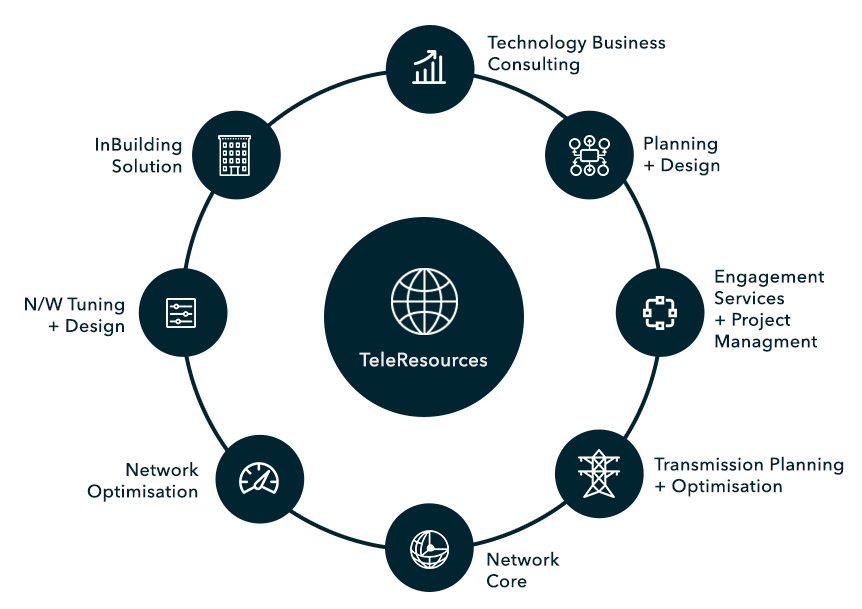
Jul
How to Plan, Design and Optimize Enterprise Networks?
How to Plan, Design and Optimize Enterprise Networks?
The continued transformation of technology to provide instant access to people at all locations of the world in their personal lives has created quite the challenge for IT managers and businesses as they look to build the fastest, most efficient, highly scalable and always accessible enterprise networks.
The demands and expectations of business leaders have grown to the point that they want to be able to access whatever they want from wherever they want without the need to switch between applications or network connections. This has placed a lot of pressure on those who need to plan, design and optimize these enterprise networks.
These expectations may seem unrealistic for IT managers, or at the very least quite the challenging undertaking. Not only is designing a highly-effective and accessible enterprise network a challenge in terms of creation and deployment, but it can also be very time consuming to set up and expensive to create.
So, how does one tasked with planning, designing and optimizing an enterprise network attack the challenge and come out successful on the other end?
The Challenges of Enterprise Networks
The whole goal behind creating an enterprise network is to bring all a company’s users and information into one central place, in the process eliminating the various silos that simple add-ons to a single-location network would create. All the systems a company uses must be integrated into this central place while still providing exceptional speed, various accessibility, and security.
This has become a big challenge today, as the trend of business is continuing to transition out of the office and into various locations. At the same time, security threats abound everywhere, and networks that are more susceptible to these security threats are those that are open to the outside.
In the age of IoT, connectivity is key, but this can be an issue for some locations and some industries. Take mining, oil rigs and work on remote islands, for example, where there may not be the availability of wireless networks, where there is an essential need for that wireless connectivity to operate the equipment.
On private campuses, there is also the balancing act of configuring a network with the proper capacity, coverage and performance monitoring while taking into consideration cost.
How Most Enterprise Networks Connect
In most organizations, an enterprise network is created by combining both local and wide area networks, called a LAN and WAN, respectively. The hub of the system is connected to the on-site workers through the LAN, while those working off-site at another location use the WAN to connect.
In most organizations, the way people connect to these network points is through either PMR/TETRA technology or WiFi. Each of these methods has a significant downside, though.
What is PMR/TETRA?
TETRA stands for Terrestrial Trunked Radio. It was first deployed back in 1997 but has grown to be the most successful digital trunking standard for those who want to use it in a professional setting. PMR stands for Private Mobile Radio, and its users include emergency services, airports, mining, factory sites, and transport services.
The limitations of a PMR/TETRA network are pretty obvious. PMR technologies support mostly voice communication and can’t satisfy the growing broadband data needs. As such, most enterprise networks can’t be built on technology unless the network is designed for an industry that is interested in only the private radio aspect of it.
Enterprise Wireless Networks
WiFi is a commonly-known technology that is used by most people on a daily basis. When most people think WiFi, they think of connecting mobile devices to a home or office network without a wire, while they’re on the go.
But WiFi is another way that an enterprise network can become connected. The obvious upside to this is most people are familiar with the technology, and as such, they know how to connect to a WiFi network at different locations.
Another major positive of WiFi is easily interoperability with user devices. There is also no Radiofrequency (RF) regulatory requirements, and it is often quick to build a network based on WiFi.
What Are the Alternatives to Building an Enterprise Network?
The best and most reliable way to build an enterprise network today is through mobile networks. In fact, EION Wireless is an optimal solution for end-users and service providers in both enterprise, public safety and private mobile markets.
EION’s Broadband Wireless offerings deliver last-mile wireless LTE and WiMAX solutions for various industries such as defense agencies, security agencies, remote communities, and enterprises. Multiple applications can be easily supported and deployed through the network, using a wide of point-to-point and point-to-multipoint radio systems along with robust and scalable broadband gateways.
Some of the other benefits to EION’s Wireless solutions are:
- Fast and reliable bandwidth
- Flexible and scalable installation
- A proven track record
- Solid security
The company offers a transformational 4G networking solution that includes end-to-end WiMAX access, and also offers Street WiFi and Tunnel WiFi solutions for enterprise networks.
The key to planning, designing and optimizing an enterprise network, is to consider your organization’s current needs as well as its future plans for expansion and growth, and then deploy a network that is both easy for IT to construct and for users to connect to.
With today’s ever-increasing focus on security, speed and instant access – all at a time when more and more of a company’s workforce needs to access the network on the road or at multiple locations – the need for an enterprise network connected with LTE technology, such as EION’s Wireless platform, is becoming more essential every day.I
Case Study: Enterprise Networks
Oil & Gas:
Challenge: Megkom was required to provide Petroleum Geo-Services (PGS) a real-time communications network between its ships, the rigs, and seismic analysis equipment over distances of 15 kilometers in an offshore environment using next-generation wireless technology.
Solution: Megkom selected EION’s VIP 110-24 radio solution and successfully completed testing. Seeing successful testing, PGS had initiated the deployment of VIP 110-24 radio solution in ten ships in the first phase. By seeing effective connectivity PGS has expanded deployment of VIP 110-24 to 25 ships.
Enterprise and Government
Challenge: Damascus University has twenty-four campuses scattered throughout the City of Damascus. The university required a private network between all the sites to share information as well as provide Internet access together with the MHE in Damascus. The large distances between all the sites meant that connecting all the sites with the conventional wire infrastructure would be prohibitively expensive.
Solution: EION’s products were chosen for this project as a result of their security, range, reliability, and cost-effectiveness. A backhaul link from a local Internet Service Provider (ISP) to the MHE was established. Then a Point-to-Multipoint system connected all campus sites to the MHE. The Ultima 3 MP was the ideal multipoint solution as some of the sites are as far as 16 kilometers (or 10 miles). EION’s innovative wireless solution ensured rapid deployment of the network needed by both the Ministry of Higher Education and the University of Damascus.
For such end-to-end private network design, deployment, and testing






